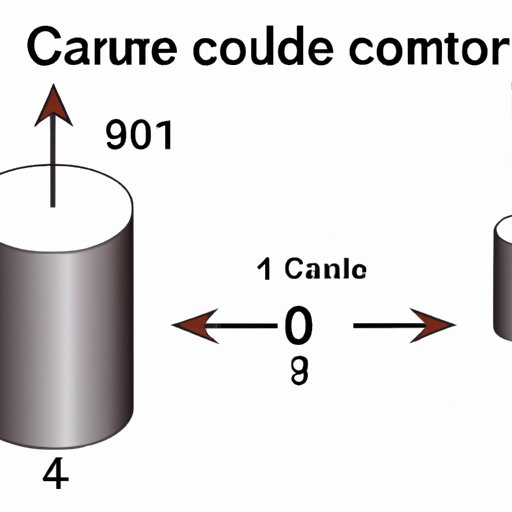Introduction
When it comes to mathematics, finding the volume of a cylinder can be a daunting task if you have no idea how to do it. The volume of a cylinder is the amount of space inside a cylinder, which is useful in a variety of applications, from calculating the amount of liquid in a container to designing a building. In this article, we will provide a step-by-step guide on how to find the volume of a cylinder, using a simple formula and visual aids to help make the process much easier.
This article is intended for anyone who wants to learn how to calculate the volume of a cylinder. Whether you’re a student studying math in school, a DIY enthusiast trying to work out the volume of a container, or anyone else who wants to learn this valuable skill, this guide is for you.
Step-by-Step Guide
The formula for calculating the volume of a cylinder is V = πr²h, where V is the volume, r is the radius, and h is the height. To calculate the volume of a cylinder, you need to know the measurements of both the radius and height of the cylinder.
The radius is the distance from the center of the circle to the outside edge of the circle on the end of the cylinder. The height is the distance between the two circles on the end of the cylinder.
To calculate the volume of a cylinder, multiply the area of the circle (πr²) by the height (h). The result is the formula: V = πr²h.
Let’s take an example to better understand how to find the volume of a cylinder:
Suppose we have a cylinder with a radius of 4cm and a height of 10cm. To find the volume of this cylinder, the first step is to square the radius and multiply the result by π. Using the formula V = πr²h, we get V = π(4cm)²(10cm). This simplifies to V = π(16cm²)(10cm), which equals 160π cubic centimeters or approximately 502.65 cubic centimeters.
Therefore, the volume of this cylinder is approximately 502.65 cubic centimeters.
Visual Aids
To make it easier to understand how to find the volume of a cylinder, visual aids can be very helpful. Using diagrams and pictures to illustrate the different components of the formula can help the reader better understand how each component works.
Diagrams and pictures can also show the relationship between the radius and height of the cylinder and help the reader visualize the process of finding the volume of a cylinder.
For example, to help illustrate the formula for calculating the volume of a cylinder, a picture of a cylinder with its dimensions labeled can be used. Annotated visuals can also point out important components of the formula, such as the radius and height.
Using visual aids can be very effective in helping the reader understand the process of finding the volume of a cylinder.
Comparison Article
While the formula V = πr²h is the most common approach to finding the volume of a cylinder, there are other formulas and approaches that can also be used. One such formula is V = Bh, where B is the area of the base of the cylinder.
Another approach is to use the volume of a cylinder formula in reverse to find the height of a cylinder given the volume and radius of the base. The formula in this case would be h = V/πr².
When comparing and contrasting the different formulas and approaches, it is important to consider the advantages and disadvantages of each. For example, using the V = Bh formula may be simpler in some cases, but it may not work for more complex shapes.
Therefore, it’s important to understand the different formulas and approaches and determine which one works best for the specific task at hand.
Real-World Application
Calculating the volume of a cylinder is necessary in many real-world scenarios. For example, in construction, architects and engineers use the concept of finding the volume of a cylinder to design buildings and structures. They must determine the amount of material required, how much concrete to mix, or how much water a certain container can hold.
Other professions that use the concept of finding the volume of a cylinder regularly include scientists working with liquids and other materials, manufacturing companies that deal with containers, and even chefs measuring liquids for cooking recipes.
Understanding how to find the volume of a cylinder can be beneficial for any job that requires measurement and calculations.
Quizzes and Tests
To further solidify your understanding of how to find the volume of a cylinder, we have included quizzes and tests with various problems and examples for you to practice on. These quizzes and tests include questions with different levels of complexity and provide immediate feedback on your progress.
The quizzes and tests allow you to practice what you have learned throughout this article and to apply these skills in a practical way.
Conclusion
Finding the volume of a cylinder can be a complex and intimidating task if you’re not familiar with it. However, with the formula V = πr²h and the help of visual aids and real-world examples, you can quickly become skilled at calculating the volume of a cylinder.
This skill is essential in many industries and professions, making it a valuable tool to have in your arsenal. By following the step-by-step guide and practicing with the quizzes and tests, you can become proficient in finding the volume of a cylinder and apply this knowledge to a variety of real-world scenarios.
